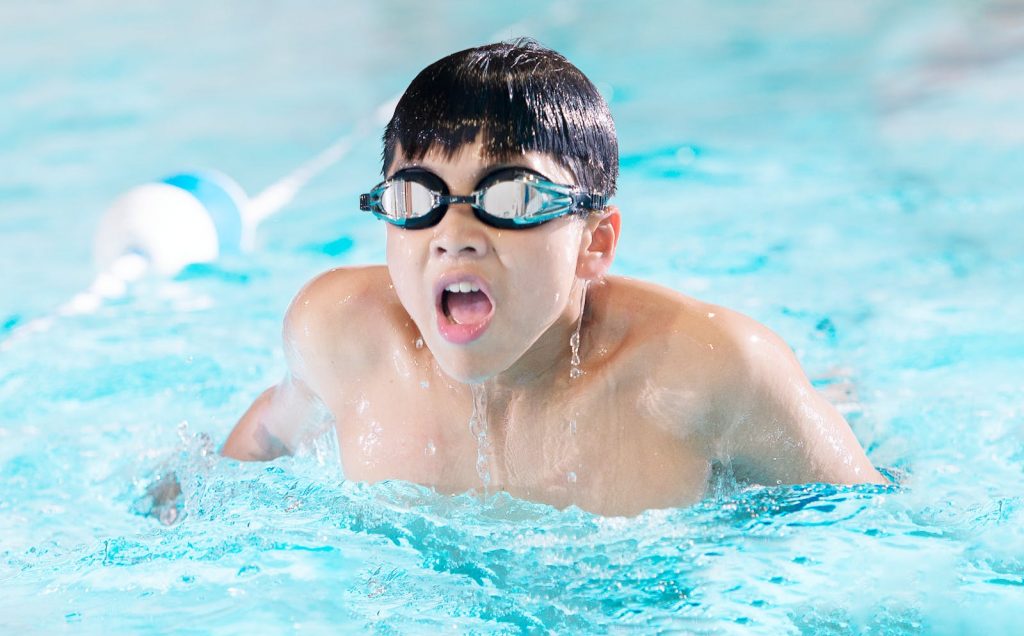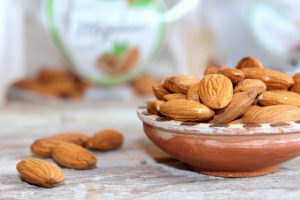15 Activities that Promote Growth in Children with Growth Hormone Deficiency

Children with low growth hormone levels often experience slower-than-normal growth, which can impact their height, muscle development, and overall physical well-being. Growth hormone deficiency (GHD) can occur for various reasons, such as genetics, medical conditions, or hormone imbalances. While medical treatments, such as growth hormone therapy, can help stimulate growth, lifestyle factors—especially physical activities—also play an essential role in promoting healthy growth in children with GHD.
Engaging in specific activities can stimulate the release of growth hormones, support bone and muscle development, and improve overall health, making them vital for children struggling with slow growth. This article will explore 15 activities that can promote growth in children with low growth hormone levels, while also supporting overall physical and mental development.
1. Swimming
Swimming is one of the most effective activities for stimulating growth in children with low growth hormone levels. Swimming works out the entire body, from the muscles to the bones, while providing a low-impact form of exercise. The stretching movements involved in swimming, such as reaching, kicking, and rotating, promote muscle elongation and flexibility, which can help support height development.
Swimming also boosts the release of growth hormones by stimulating the cardiovascular system. Additionally, the buoyancy of water minimizes the strain on joints and bones, reducing the risk of injury. Regular swimming, either in lessons or recreationally, can help children build strength, endurance, and flexibility, all of which contribute to overall growth.
2. Hanging Exercises
Hanging exercises are simple yet highly effective in promoting growth in children with low growth hormone levels. When children hang from a bar or a branch, their bodies experience a stretching effect that helps elongate the spine and improve posture. This stretching can contribute to spinal decompression, which may aid in height growth over time.
Incorporating hanging exercises into daily routines helps stretch the upper body, spine, and arms, which can improve overall flexibility and boost growth hormone release. Encouraging children to hang for a few minutes each day, either from monkey bars or a pull-up bar, can support spinal health and promote growth.
3. Stretching Exercises
Stretching is another excellent activity for promoting growth in children with low growth hormones. Regular stretching exercises can lengthen the muscles, improve flexibility, and enhance posture. Stretching also stimulates blood flow to the muscles and bones, which supports growth and development.
Some beneficial stretching exercises for children include:
- Toe touches
- Cobra stretch
- Bridge stretch
- Cat-cow stretch
Incorporating 10-15 minutes of daily stretching can help improve a child’s posture, flexibility, and overall body alignment, which may positively impact their height.
4. Cycling
Cycling is not only a fun activity for children but also a fantastic way to promote growth. Cycling involves repetitive leg movements that can strengthen leg muscles and promote bone growth in the lower body. The action of pushing the pedals also stimulates growth hormone production, as cycling is a cardiovascular exercise.
Additionally, cycling helps improve posture, endurance, and coordination, which are essential for healthy physical development. Encouraging children to cycle regularly, whether outdoors or on a stationary bike, can help support their overall growth and fitness levels.
5. Jumping Rope
Jumping rope is a high-impact activity that stimulates bone growth and promotes the release of growth hormones. The jumping motion engages multiple muscle groups, particularly the legs and core, helping to strengthen the muscles and bones. Regularly engaging in activities like jumping rope can also improve coordination, balance, and cardiovascular health.
For children with low growth hormone levels, jumping rope provides an accessible and enjoyable way to enhance their physical development. A few minutes of jumping rope each day can help boost growth and overall health.
6. Basketball
Basketball is a sport that involves a lot of jumping, stretching, and reaching, all of which are beneficial for promoting growth in children. The repeated jumping movements during basketball games can stimulate bone growth in the legs, while reaching for the basketball encourages spinal elongation.
Additionally, basketball is a fast-paced cardiovascular exercise that promotes the release of growth hormones. Engaging in team sports like basketball also improves a child’s coordination, agility, and muscle tone, making it an ideal sport for children looking to boost their growth naturally.
7. Yoga
Yoga is an excellent activity for children with low growth hormones because it promotes flexibility, balance, and mental well-being while supporting growth hormone production. Certain yoga poses, particularly those that involve stretching and spinal elongation, can help improve posture and promote bone health.
Some yoga poses that are beneficial for growth include:
- Mountain pose (Tadasana)
- Cobra pose (Bhujangasana)
- Tree pose (Vrikshasana)
- Downward dog (Adho Mukha Svanasana)
Practicing yoga regularly helps improve core strength, balance, and mental focus, which are all important for a child’s overall development and well-being.
8. Pilates
Pilates, like yoga, emphasizes core strength, flexibility, and posture, making it an ideal activity for children with low growth hormone levels. Pilates exercises often focus on spinal alignment and elongation, which can help improve a child’s posture and stimulate growth in the vertebrae.
Children can benefit from practicing basic Pilates exercises such as roll-ups, leg circles, and spine stretches, all of which promote flexibility and strength while encouraging growth hormone release.
9. Rock Climbing
Rock climbing is an exciting activity that engages the entire body, requiring both upper and lower body strength. The pulling and reaching motions involved in climbing help stretch the arms, legs, and spine, which can contribute to overall growth. Rock climbing also stimulates muscle development and improves coordination, both of which are essential for healthy growth.
For children with low growth hormone levels, rock climbing can be a fun and challenging way to build strength, boost confidence, and stimulate growth.
10. Walking
Walking is a simple yet effective way to encourage growth, especially when done regularly and for extended periods. Walking helps stimulate blood flow and oxygen delivery to the muscles and bones, which is essential for growth and development. It also promotes the release of growth hormones, especially when walking at a brisk pace.
Encouraging children to walk daily—whether by walking to school, taking nature walks, or going on family strolls—can support healthy growth while improving cardiovascular health and muscle strength.
11. Dancing
Dancing is a full-body activity that promotes coordination, flexibility, and strength. The repetitive movements and stretching involved in dancing can help elongate the muscles and promote the release of growth hormones. Whether through structured dance classes or freeform dancing at home, this activity allows children to express themselves while supporting their physical development.
Dancing also improves balance, coordination, and posture, all of which contribute to overall growth and bone health. Children can benefit from various styles of dancing, including ballet, hip-hop, or jazz.
12. Martial Arts
Martial arts, such as karate, taekwondo, or judo, are excellent activities for building strength, discipline, and flexibility. The controlled movements in martial arts help strengthen muscles, improve posture, and boost the production of growth hormones.
Martial arts also focus on balance, coordination, and mental focus, which are essential for a child’s overall growth and development. Additionally, martial arts instill a sense of confidence and discipline that can positively impact a child’s emotional and social well-being.
13. Resistance Training with Bodyweight
Bodyweight exercises, such as push-ups, pull-ups, squats, and lunges, can promote muscle growth and improve bone health. While traditional weightlifting is not recommended for children due to the risk of injury, bodyweight resistance training can be safely incorporated into a child’s routine to build muscle mass and stimulate bone growth.
These exercises can be done anywhere and do not require equipment, making them a convenient way for children with low growth hormone levels to stay active and build strength. Regular bodyweight exercises can help improve posture, endurance, and overall physical development.
14. Trampoline Jumping
Jumping on a trampoline is not only fun for children but also a great way to stimulate growth hormone production. The jumping motions promote bone growth in the legs and help improve coordination and balance. Jumping on a trampoline also reduces the impact on joints compared to traditional jumping exercises, making it a safer option for children with low growth hormones.
Trampoline jumping can be incorporated into a child’s daily playtime, providing both exercise and fun while supporting their physical development.
15. Sleep and Rest
While not a physical activity in the traditional sense, adequate sleep is crucial for promoting growth in children with low growth hormone levels. Growth hormone is primarily released during deep sleep, making sleep one of the most important factors in a child’s physical development.
Children should aim for 9-11 hours of sleep each night to support the natural release of growth hormones. Creating a consistent sleep routine and ensuring a restful environment can maximize the body’s ability to produce and utilize growth hormones effectively.
Conclusion
For children with low growth hormone levels, engaging in specific physical activities can make a significant difference in promoting healthy growth and development. While medical interventions like growth hormone therapy may be necessary in some cases, incorporating activities that stimulate growth hormones naturally can be an effective complementary strategy.
By focusing on activities like swimming, cycling, stretching, and yoga, children can support their bone health, muscle development, and overall fitness. These activities not only promote physical growth but also improve coordination, flexibility, and mental well-being, helping children lead healthier and more active lives.
It’s important to ensure that these activities are performed regularly and under proper supervision, especially when introducing new or challenging exercises. Combined with a balanced diet, adequate sleep, and medical guidance, these activities can significantly improve a child’s growth potential and overall well-being.



